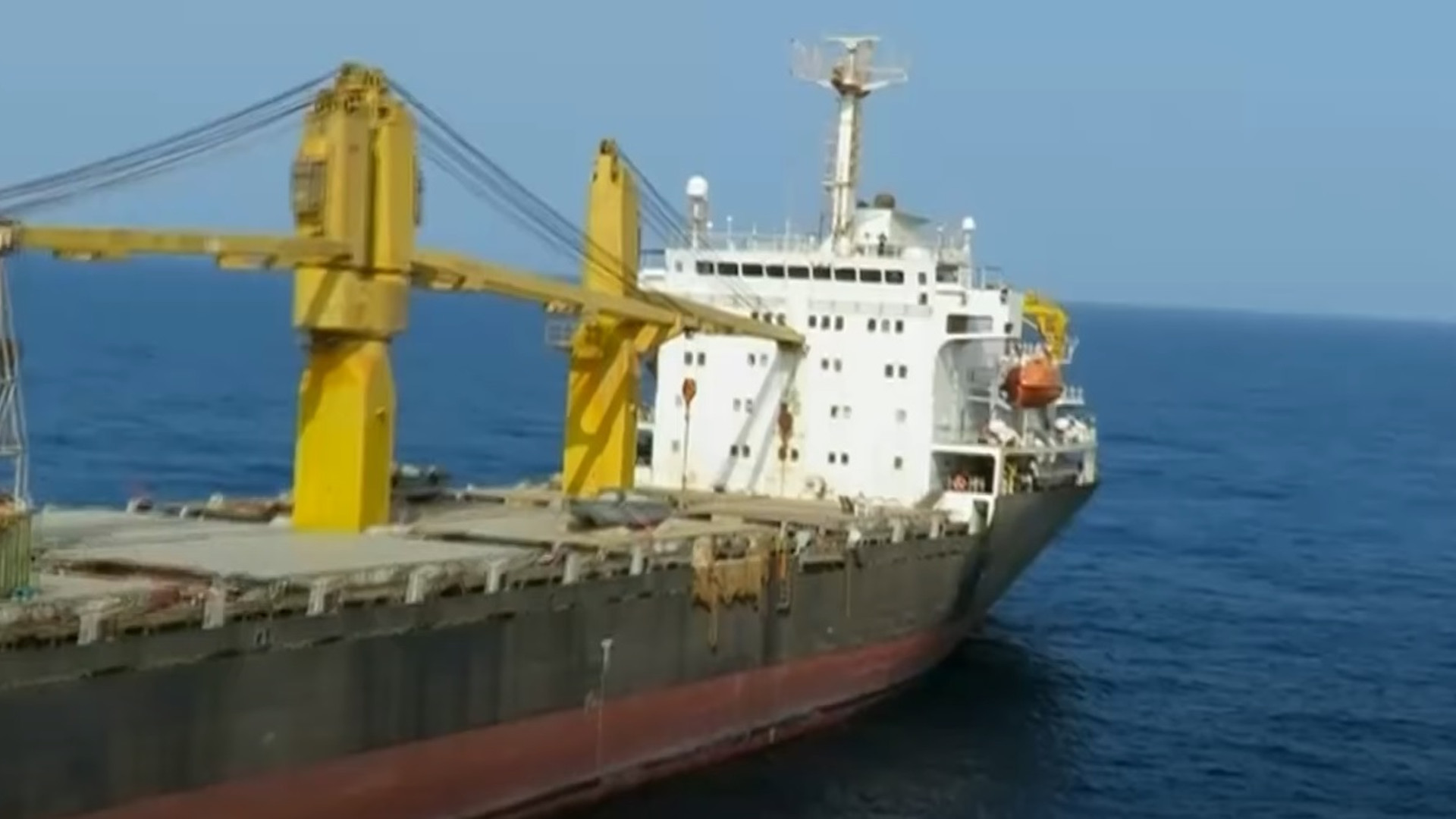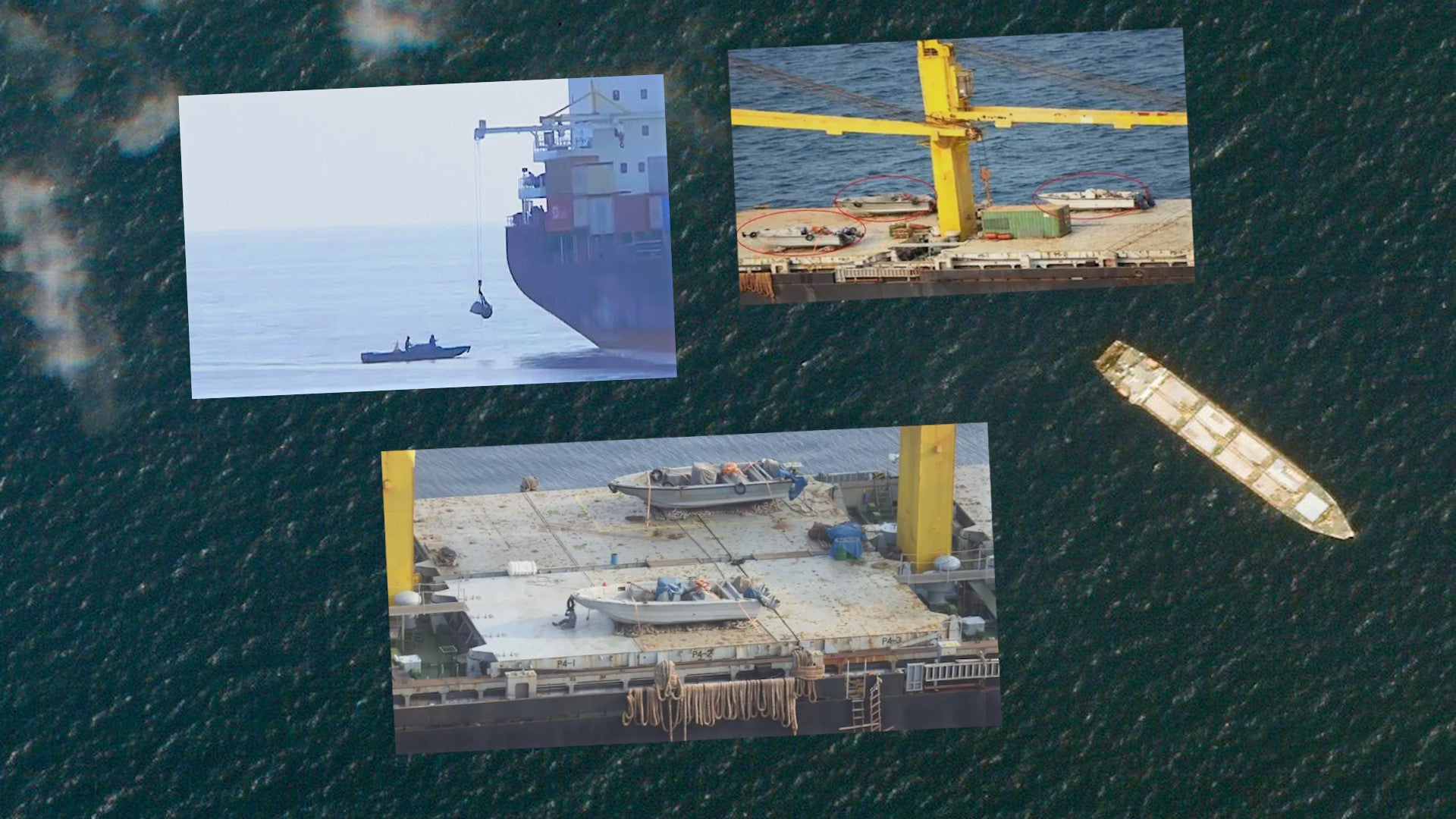The Iranian government has confirmed that the M/V Saviz was the victim of an attack in the Red Sea yesterday. The ship is widely believed to be a mothership that the country’s Islamic Revolutionary Guard Corps uses to assist Houthi rebels in Yemen and otherwise conduct discreet activities in the region, particularly around the strategic Bab Al Mandeb Strait.
There are reports that Israel carried out the attack and that it is the latest incident in an escalating series of tit-for-tat clandestine operations by the two countries that have primarily targeted each others’ commercial ships. The attack also came on the same day that the United States and Iran held their first indirect negotiations over the future a controversial multi-national deal regarding Tehran’s nuclear programs.
Saeed Khatibzadeh, a spokesperson for Iran’s Foreign Ministry, told reporters at a press conference that the attack on Saviz had taken place at around 6:00 AM local time on Apr. 6, 2021, off the coast of the East African country of Djibouti. He said that the damage had been minor and that there were no casualties. He declined to specify the method of the attack, saying the matter is under investigation. In its initial reporting, Iran’s Tasnim News Agency, which is linked to the Islamic Revolutionary Guard Corps (IRGC), said that “information obtained … suggests that the incident happened after the explosion of limpet mines attached to the hull of the ship.” The New York Times
subsequently reported that the damage to Saviz‘s hull was below the waterline.

“Fortunately, no fatalities were caused by the incident, and technical evaluations on how the incident occurred and its origins are underway,” Khatibzadeh said. “Our country will take all necessary measures about it through the international organizations,” he added.

The exact nature of the incident otherwise remains murky. “Several Iranian news outlets showed images of flames and smoke billowing from a stricken vessel in the Red Sea, but the full extent of the damage or any casualties was unclear,” according to The New York Times. However, The War Zone has been unable to find any such images online, even ones that might have been purported to show the ship on fire, but were later determined to be unrelated.
The Times also reported that an American official had said that Israeli authorities had informed the U.S. government at around 7:30 AM on Apr. 6 that their country had carried out the attack. That same individual told The Times that Israel conducted the operation in direct retaliation for previous Iranian attacks on unspecified Israeli ships. This would appear to be a reference, at least in part, to the Israeli-owned, by Bahamian-flagged cargo ship Helios Ray, which was the victim of an apparent attack in the Gulf of Oman in February. Authorities in Israel subsequently said the IRGC was responsible for that incident, something the regime in Tehran has publicly denied.
The Helios Ray incident already appeared to be an Iranian retaliatory operation in response to years of Israeli attacks on the country’s commercial ships. The Wall Street Journal had first reported on that anti-Iranian shipping campaign, which is said to date back to at least 2019 and involve limpet mine attacks on at least a dozen Iranian vessels, in March. The targeted ships were primarily oil tankers, but some were also said to have been carrying weapons and other military equipment bound for Iranian proxy forces in the Middle East.
There were also indications that the attack might have been timed in such a way as to ensure that U.S. Navy’s Nimitz class aircraft carrier USS Dwight D. Eisenhower, and elements of its Carrier Strike Group, were sufficiently far away from the Saviz at the time. Eisenhower was reportedly some 200 miles away when the Iranian ship was attacked. The carrier and her escorts had been delayed in passing through the Suez Canal into the Red Sea, in the first place, due to the now-infamous grounding of the container ship Ever Given in that vital maritime chokepoint in March.

If it is true that Israel was responsible for the attack on Saviz, it would represent a significant escalation in the country’s clandestine operations against Iran’s ships. Though ostensibly a commercial vessel flagged in the Bahamas, the Saviz is owned and operated by a company linked to the IRGC. It has been operating in the Red Sea continuously since 2017 and Iranian authorities now fully acknowledge that it has a military purpose, though they dispute what it is.
Iran’s public position is that the ship is a sea base supporting counter-piracy and other maritime security efforts in the southern end of the Red Sea. “The ship was practically operating as Iran’s logistical station in the Red Sea,” Foreign Ministry spokesperson Khatibzadeh reiterated at today’s press conference. “The ship’s information and mission had been already announced to that organization [the International Maritime Organization] officially.”
Other reporting over the years, however, has presented considerable evidence that Saviz is a special operations mothership of sorts that is, at least in part, a hub for operations in support of Yemen’s Iranian-backed Houthi rebels. These activities could involve aiding in the smuggling of weapons and other equipment to that group and the gathering of intelligence that could be used to plan attacks on commercial interests of opponents in and around Bab Al Mandeb Strait and elsewhere in the region. Officials in Saudi Arabia, who have led a coalition fighting the Houthis since 2015, have publicly accused Iran of using the ship for these purposes.
The Saviz does provide a valuable forward base to support Iranian maritime interests in this region, in general. With this in mind, it’s interesting to note that the Iranian oil tanker Sabiti was observed via satellite imagery sailing toward the Saviz after suffering a reported attack in the Red Sea in 2019. The former ship is believed to be one of the earliest targets of Israel’s anti-Iranian shipping operations.
It’s perhaps interesting that the Saviz has gone unmolested for so long now, despite the accusations about its real purpose. The Saudi military even went so far as to rescue an injured Iranian sailor for the ship in 2019, saying it had a humanitarian duty to do so, despite its public position that the vessel represents a threat to its own national interests, as well as those of its partners in Yemen. It’s worth pointing out that that operation would have given Saudi authorities an opportunity to more closely examine the ship, at least externally, and possibly gain intelligence from the evacuee.
What may have changed now is not entirely clear, but the attack did come as U.S. and Iranian representatives held the first of what is hoped to be a series of indirect talks via European diplomats in Vienna, Austria. These diplomatic engagements are aimed at paving a way for the United States to rejoin a controversial multi-national deal over Iran’s nuclear program, as well as getting the regime in Tehran back into compliance with that agreement.
President Donald Trump withdrew the United States from what is formally known as the Joint Comprehensive Plan of Action (JCPOA) in 2018, a decision that was subsequently followed by the enacting of significant new sanctions against Tehran. The Iranians have since violated all of its key provisions in an effort to pressure the remaining parties to meet its demands and resist American pressure to step up their own sanctions or withdraw entirely.
Israeli Prime Minister Benjamin Netanyahu, along with many other Israeli officials, as well as a number of members of Congress in the United States, oppose the JCPOA and America’s involvement in it. The Biden Administration, for its part, had initially stressed that Iran would need to get back in compliance first and that it would get no sanctions relief before some sort of deal is struck regarding the return of the U.S. government to the agreement. There have since been reports that American officials were at least considering relaxing some sanctions to get Iran to the negotiating table.
“It’s clear what the timing [of the attack] intends to achieve,” a U.S. official told The Wall Street Journal. Any negotiations between the United States and Iran over the JCPOA will be “complicated by Saudi and Israeli interference and their hard-line posture,” an Iranian diplomat also told that newspaper.
How Iran chooses now to respond to this attack could further frustrate attempts at renewed U.S.-Iranian diplomatic engagement. At the same time, it also further points to the Israeli government’s willingness to do whatever it feels is necessary to undermine the Iranian regime and keep it isolated on the international stage.
Contact the author: joe@thedrive.com
